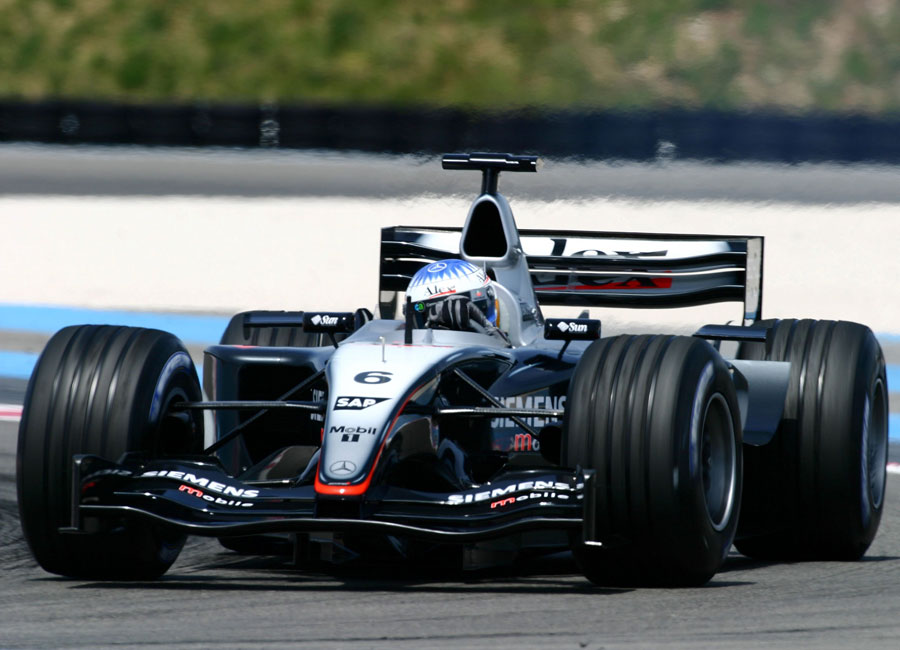Tommy Cookers wrote:Webber2011 wrote:Tommy Cookers wrote:these crankshafts have dampers to reduce torsional vibration but will still be twisting through about +0.25 deg to -0.25 deg about 200 times per second
generating high stresses that would cause fatigue failure after maybe 200 hours
the mechanical effects due to the MGU-K (geared to the crankshaft) will be integrated into the crankshaft/damper system by design
but the MGU-K is presumably exposed to (some of) the crankshaft's torsional vibration
this vibration is presumably causing some kind of vibratory stress damage/fretting to the electrical insulation of conductors in the rotating parts
That's something I'd like to know more about mate !
Could you explain in a bit more detail the crankshaft damper system ?
I find that fascinating !
at this moment I assume modern race engines (even V6s) still have dampers as all road cars and performance road cars do
eg
http://www.atiracing.com/products/dampe ... _dinan.htm
though they don't all use the conventional elastomer-mounted inertial mass type, other types are available
eg the Cosworth DFV seems to have been initially without a damper, but introduced it in 1971 as the rpm was raised
the Cosworth CA has 'a big viscous damper on the back of the crankshaft' (and 13 other dampers)
some other rival NA F1 engines used pendulum-type dampers on their crankshaft torsionals
and Cosworth says 'in F1 it is a case of using the best firing order and fixing the torsionals'
http://www.f1technical.net/articles/18858
the damping is lighter than suspension damping (a crankshaft has some natural damping from internal and external friction)
but is enough to reduce the angular deflection by at least half
eg the 60s Indy Ford crossplane V8 had +-0.21 deg damped at normal peak power 7300 rpm
but undamped +-0.36 deg (4th order) at 6100 rpm and over 0.5 deg (3rd order) at 8000 rpm
(btw if made of mild steel this crankshaft twisted to 0.21 deg wouldn't return to 0 deg unloaded, if cast iron it'd break before reaching 0.21 deg)
(btw 2 this engine was used (destroked from 4.2 to 3 litres) in 1967 F1 by McLaren
the destroking was done by machining much away much of the crankpins and metal spraying (Stellite) new metal in the right place
over-ported and over-valved even at 4.2 litres it was a disaster at 3 litres, slightly relieved by using smaller bellmouths and throttle bodies
the days of 'men in sheds' ! - maybe they should have V6'd it ? eg by leaving 2 pistons on the bench? )
due to its position we would expect the MGU-K to be exposed to some small fraction of the torsional vibration at engine frequency
but a bigger fraction of the torsional vibrations at higher frequencies eg 3rd order etc, these are anyway the greater amplitudes
and the MGU-K angular displacement is about 3.5x the crankshaft's as this is the gearing ratio
Excellent !
Thank you Sir

The first link you posted has a great explanation, and is just what I was looking for.
Detailed enough to tell me what I needed to know without frying my brain

As an aside, I know it's off topic but maybe not too much.
I have an Ex Girlfriend that I'm still great friends with and one day she came to visit.
As she drove into my drive way (which was quite long, as I was living on a rural property), she lost all power steering, so parked it right there.
We walked down and when I popped to bonnet expecting a belt or something, I found the whole crank pulley had just fallen off ! !
The bolt had come loose, and it had worked it's way off the shaft at the very moment she turned in.
Thank God it didn't happen on the freeway !
So we bought another, got some new belts, and she was on her way again.
(That was once I found a suitable key at work, because would you believe when you purchase a new pulley they don't supply the key ?)
The reason I was so interested in your post was because, and this is the honest truth I swear, it was a Honda





